News
Emigre Archives Continue to Provoke and Enlighten
Librarian Kate Long recounts the many ways we use the Emigre collection, and Jon Sueda introduces a new series for experiencing Emigre magazine in the Online Archive.
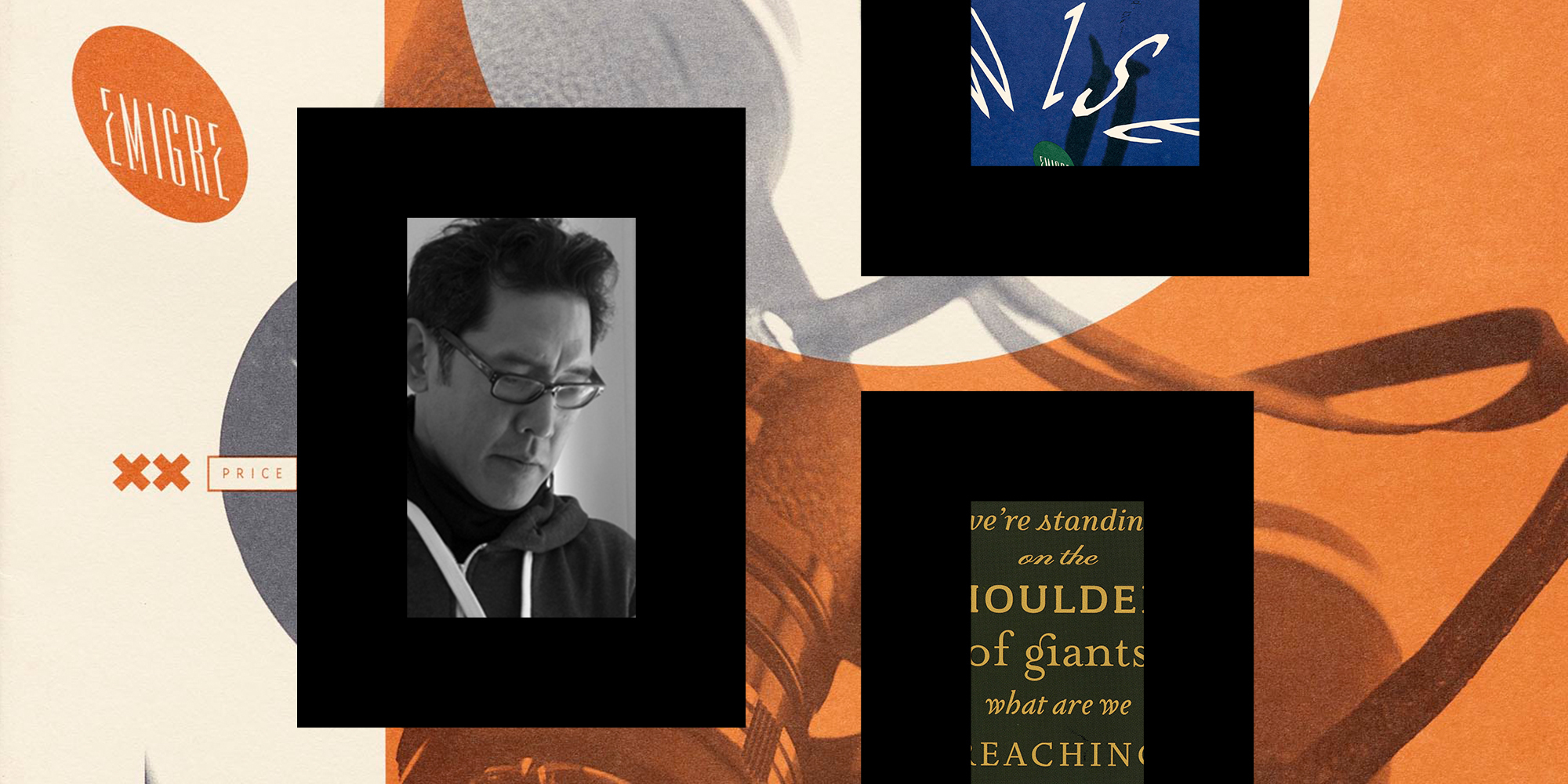
It takes a long time to do most things well. When I started volunteering at Letterform Archive, the organization had just received its first major donation. Rudy VanderLans and Zuzana Licko of Emigre had gifted their archives containing thousands of objects: books they printed, books they referenced, type development files, type specimens, every issue of Emigre magazine, process work and proofs, and binders holding a few decades’ worth of communication.


One of my first volunteer projects was to help begin processing their collection, specifically the mini cassettes that hold, on their tiny ribbons of tape, hundreds of hours of conversations between Rudy and influential designers of the 1990s and 2000s. I’d later join the Archive staff and meet Rudy and Zuzana — even have the honor to work with them to ensure our metadata was thorough and accurate. It’s been five years, and we’re still not quite done processing the Emigre archives. Thanks to the work of our amazing staff and incredible volunteers, we’re pretty dang close.
In 2017 I was on the team that kicked off our Discovery Layer project. LfA’s former librarian Amelia Grounds, Murray Grigo-McMahon, and I worked closely to create the foundations of what launched publicly last spring as our Online Archive. That project was in development for a full year and half before we released the beta in December 2018. Jon Sueda, chris hamamoto, and Omar Mohammad created the look and feel of the Online Archive. Their vision and understanding of user interaction was critical to the design rounds of the Online Archive’s development.
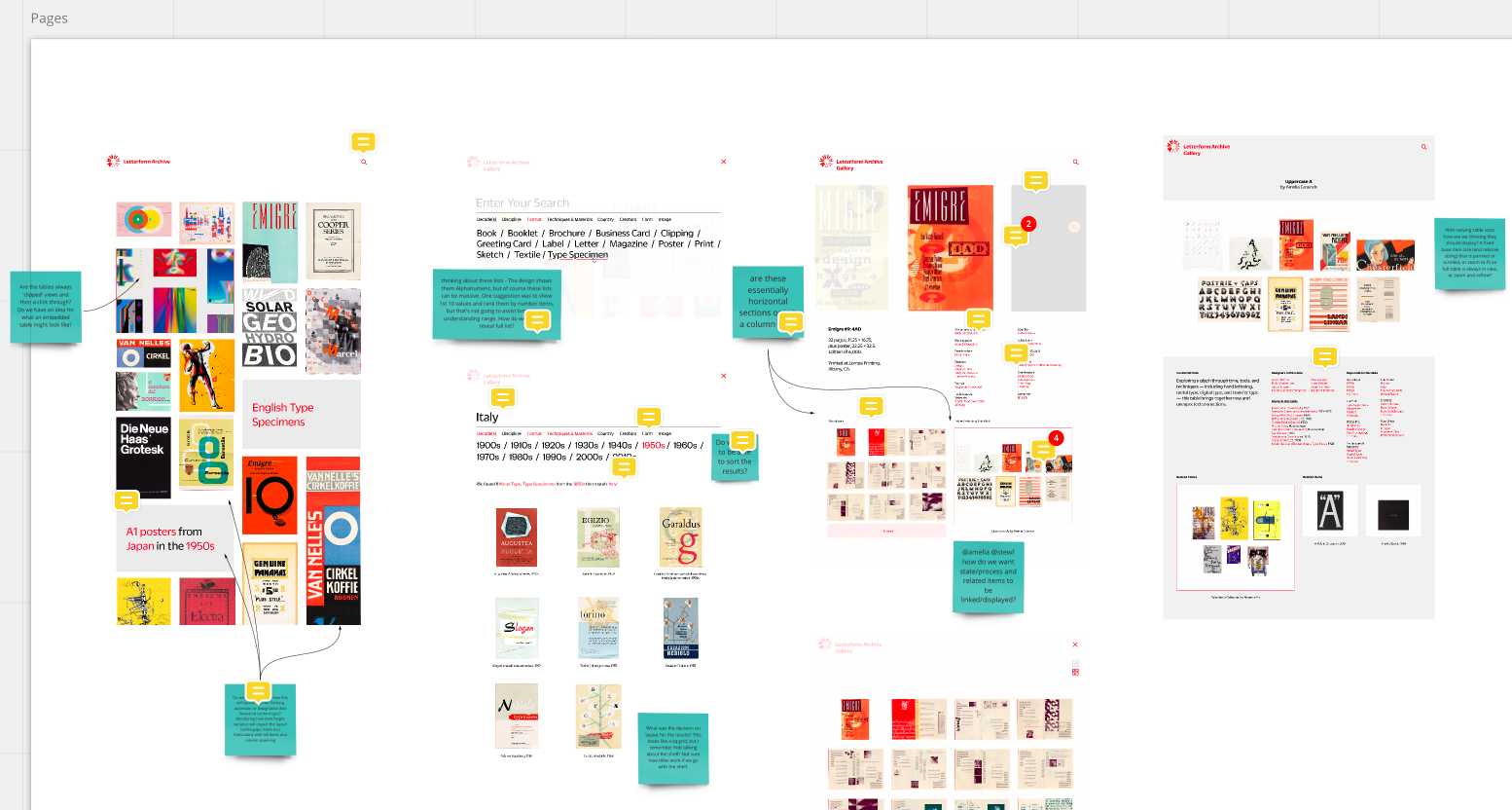
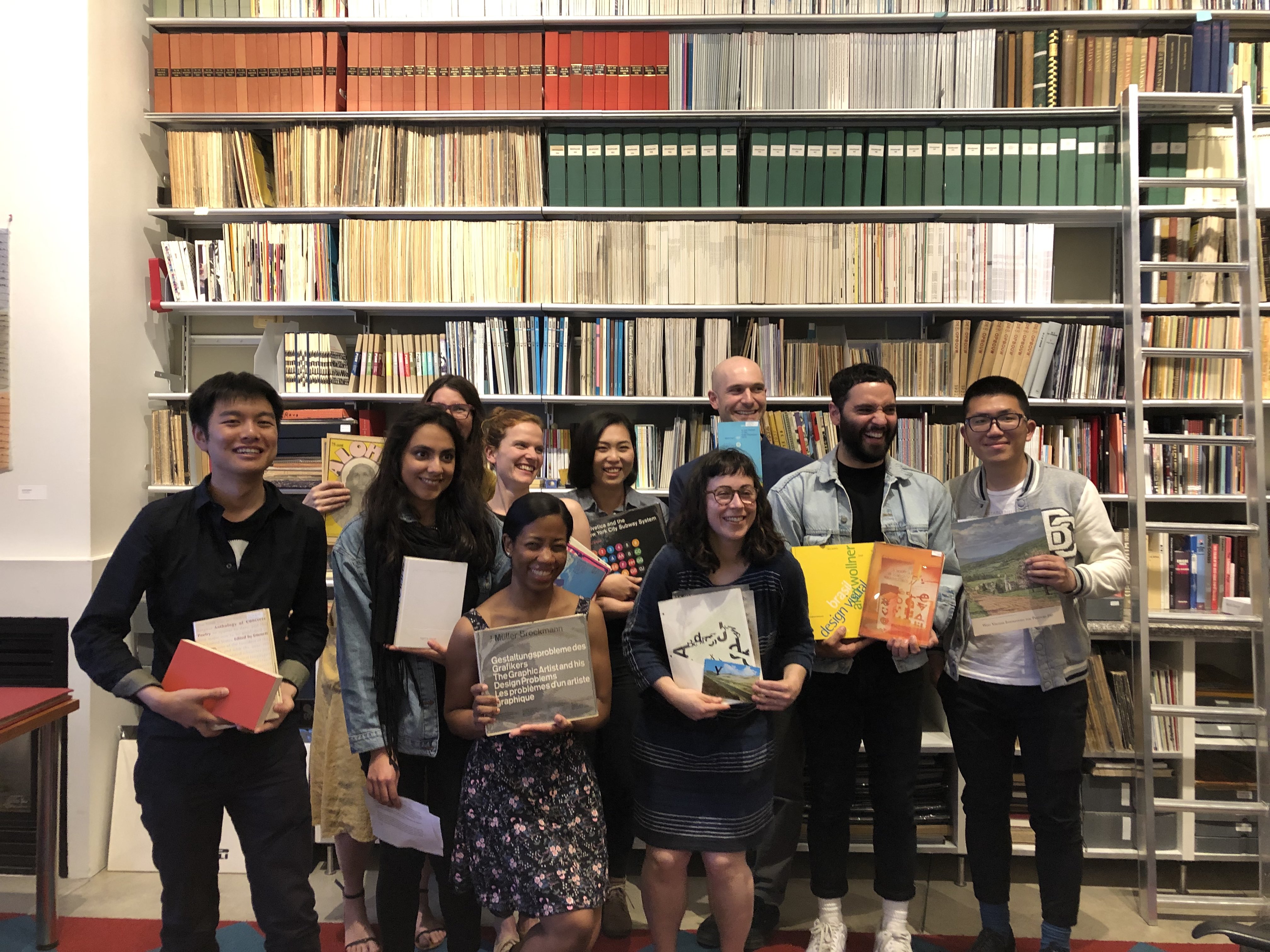
Working on the Online Archive wasn’t the first time we had the chance to work with Jon. As chair of the MFA Design program at California College of the Arts, our neighbors here in San Francisco, he approached us about teaching a type history survey. This class offered the unique opportunity for students to hold the artifacts they were learning about — from a leaf of the Gutenberg Bible to a phototype film roll. Last spring when we were all forced to go inside, like everyone else, we had to pivot. In lieu of a reading room table with original magazine art boards and type design sketches, we arranged for students to interview Rudy and Zuzana, and I was able to teach an entire section on grunge typography and postmodern graphic design from issues of Emigre available in the Online Archive.
Ever since Rudy and Zuzana’s initial donation to the Archive, it was a mutual goal to digitize the full catalog of Emigre from cover to cover in high-fidelity, readable images. Despite a pandemic, the students were engaged and exceptionally participatory. A few even reached out later with positive feedback about their experience. I take little credit for the success of the lecture and think often about the serendipity of Jon approaching us, and Rudy and Zuzana’s support of digitization. I try never to take for granted how unbelievably lucky we are to have such an active community, rich archival resource, and generous, engaged donors.

Every major project and guest program I have engaged in has been supported by material in the Emigre archives. Both of the exhibitions Florence Fu and I curated together (History of Type and Design in the ’90s) prominently featured Emigre. The collection is a frequent guest request, too. During her research for Graphic Means, Briar Levit visited the Archive to see bluelines of Emigre magazine. I recall another researcher who would come in weekly to read through one issue at a time; he was moved to see the magazine in person because they were not easily accessible in his home country.
These in-person experiences are irreplaceable, but the Online Archive goes a long way in serving our community near and far. One of the features I’m most enthusiastic about is Tables. Just as I would set a table for students or visitors in our reading room, Archive members can now fill tables of their own with research or inspiration.
On the heels of the recently debuted guest-curated tables, it is incredibly exciting for me to announce a new table series from Jon Sueda. In a creative and useful use of the feature, he’ll be curating gems from Emigre by outlining key terms as they appear in issues of the magazine. His project is a beautiful, practical mash-up of two projects that have been close to my heart and made possible by the culmination of so many people’s efforts and support over the last five years. I hope you tune in for each installation of his glossary project — it’s guaranteed to provoke and enlighten.
— Kate Long, Librarian
An Incomplete and Ongoing Index for Emigre Magazine / Table 01
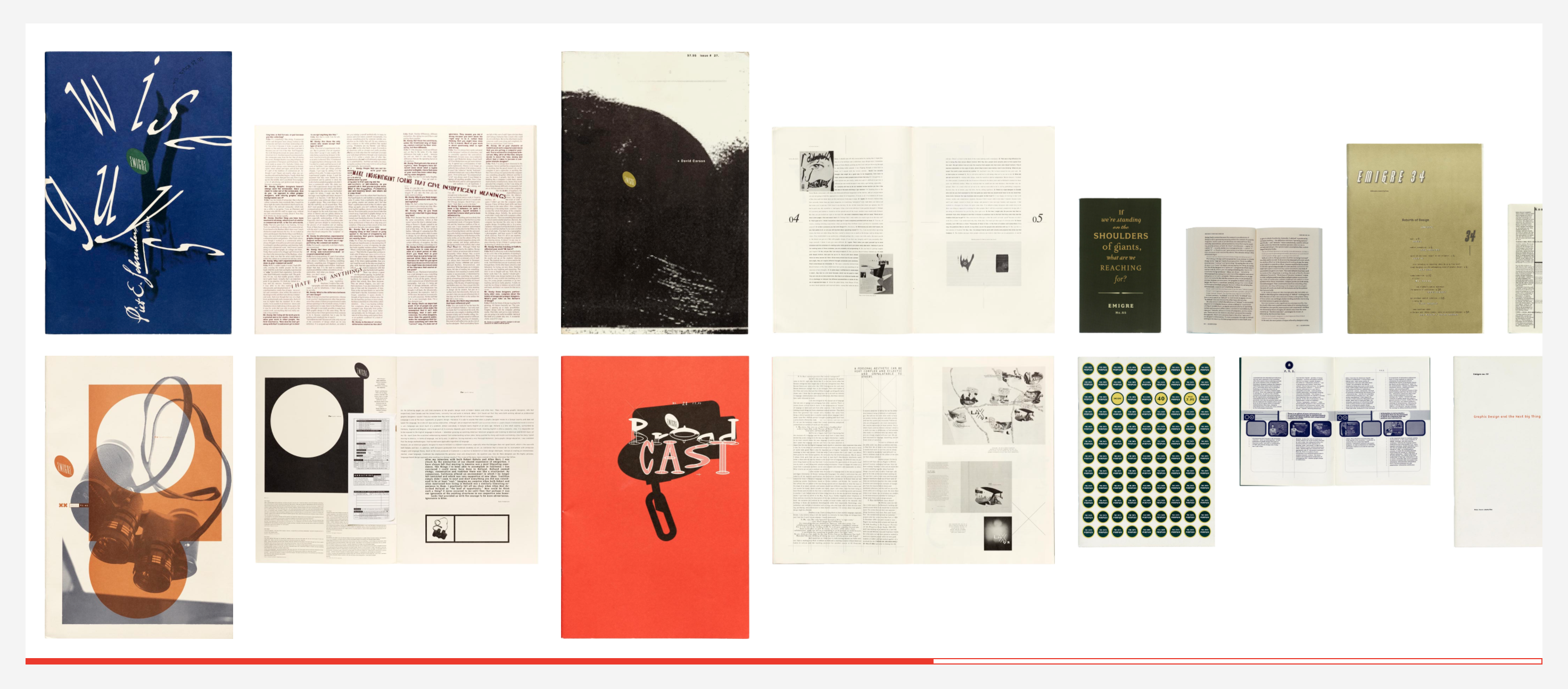
Jon Sueda is the founder of the design studio Stripe, which specializes in print and exhibition design for art and culture. He has served as director of design at the CCA Wattis Institute for Contemporary Arts, and is currently the chair of the MFA Design program at California College of the Arts. Jon was the curator of the exhibition All Possible Futures (SOMArts, San Francisco, 2013), and was recently selected as a member of the Alliance Graphique Internationale. He introduces his series of Online Archive tables with this note:
One of the unique aspects of Letterform Archive’s Online Archive, is that it’s not only for “looking” but also for “reading”. The image quality (high resolution) and comprehensiveness (every spread is included) allows for more in-depth research beyond the visual. In creating this initial table, I wanted to focus on this aspect of the site and immerse myself in content I was interested in uncovering. This contribution will be called “An Incomplete and Ongoing Index for Emigre Magazine” which will be a table series, featuring various issues and pointing the viewer toward “key terms” I find through browsing the Emigre Magazine archive online. These issues inspired me as a student over 20 years ago and I’m not surprised that much of it is still relevant today. Hopefully these tables will encourage people to look back or look into Emigre for the first time and engage with topics that continue to resonate with graphic design today.
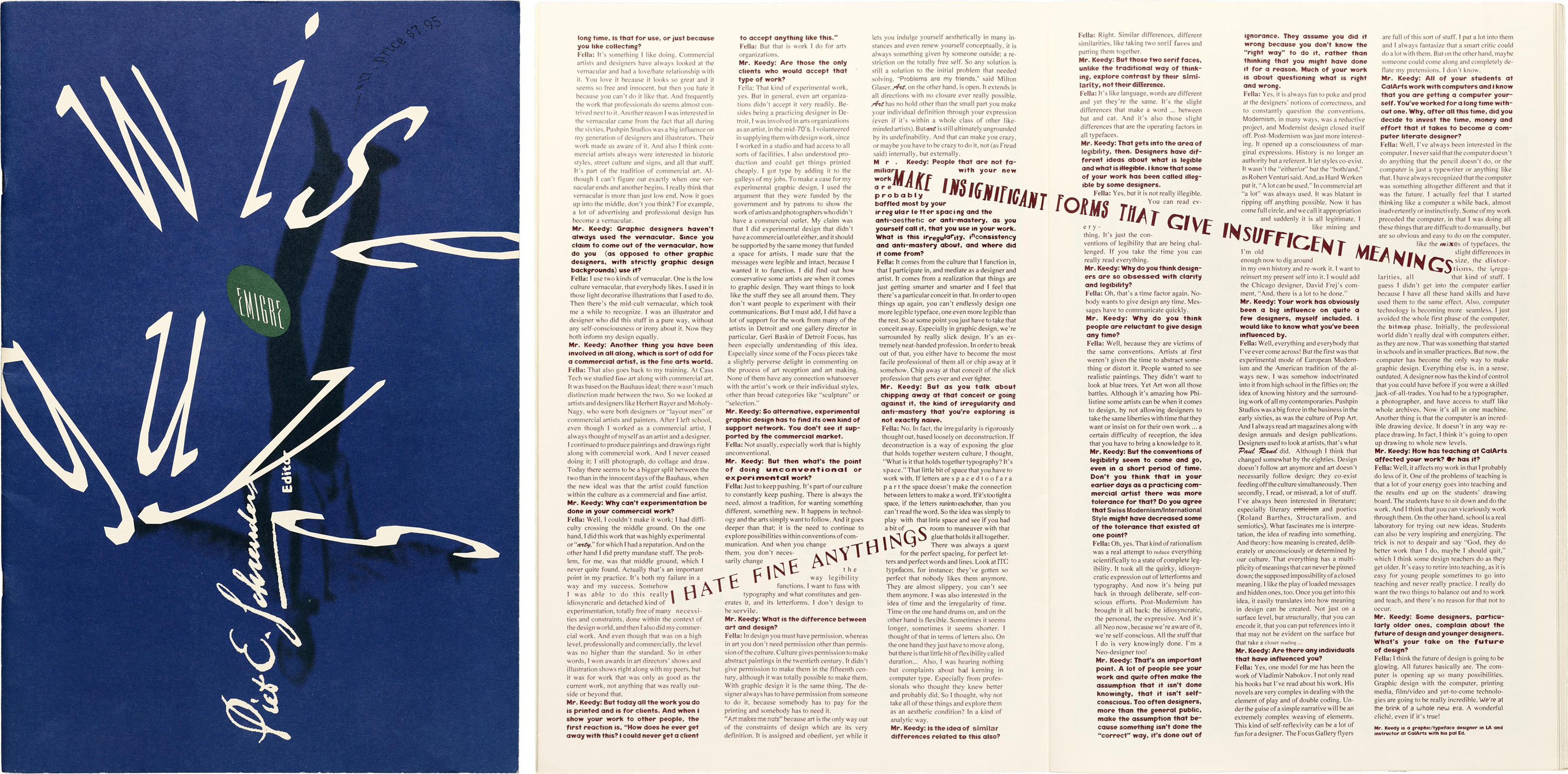
“People that are not familiar with your new work are probably baffled most by your irregular letter spacing and the anti-aesthetic and anti-mastery, as you yourself call it, that you use in your work.”
As he continues to create new tables for his “Ongoing Index”, Jon encourages viewers to send suggestions for terms they remember from Emigre and would like to see on a future table.
